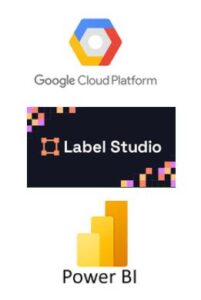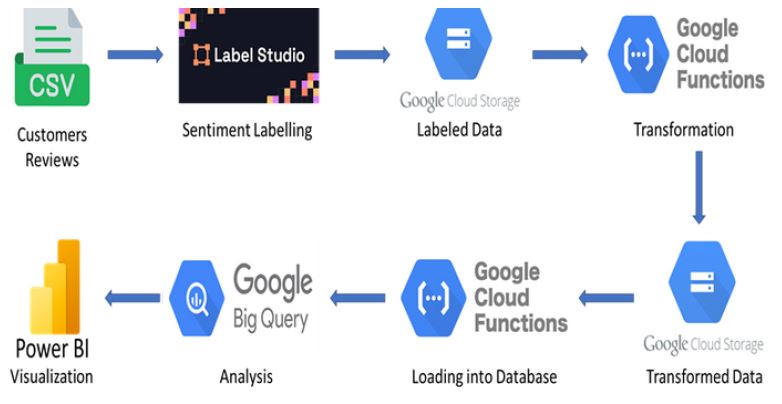- July 28, 2023
Analyzing Restaurant Reviews: Unveiling Sentimental Insights in Customer Feedback

Introduction
Sentiment analysis, a powerful tool for understanding customer feedback, plays a crucial role in today’s digital landscape. This case study focuses on sentiment analysis within the Scope restaurant context, aiming to extract valuable insights from customer reviews.
Problem Statement
To perform sentiment analysis and provide sentiment labels for a large dataset of customer feedback for a restaurant, leveraging cloud-based solutions for efficient processing and analysis.
Methodology

Data Collection: In the data collection phase, a diverse range of data, such as customer reviews or social media posts, is gathered from multiple sources.
Data Labeling: Data labeling involves the manual assignment of sentiment labels (positive, negative, neutral) to each data point in the collected dataset.
Data Transformation: After data annotation, the next step in data transformation is selecting the most useful and relevant information for further analysis.
Data Analysis: In the data analysis phase, we perform a comprehensive examination of the transformed dataset to extract valuable insights.
Visualization: Visualization is a powerful tool in sentiment analysis, presenting sentiment-related insights in a visually intuitive manner.
At A Glance
Challenges
- Human Labeling
- Automation
Benefits
- Customer Feedback Analysis
- Reputation Management
- Menu Optimization
- Marketing Campaign Evaluation
- Customer Service Improvement
- Benchmarking & Goal Setting
System Requirements / Tools

Project Architecture

Our Approach
- Customer reviews are collected in CSV format and stored locally, preparing the dataset for sentiment analysis.
- Sentiment labels (positive, negative, neutral) are manually assigned using the Label Studio annotation tool, and the labeled data is stored in a Google Cloud Storage bucket.
- Google Cloud Function is used to select valuable information and attributes for analysis.
- Essential sentiment-related features are filtered and extracted from the annotated dataset using a Python script, and the resulting data is stored in a cloud bucket.
- A thorough examination of the transformed dataset is conducted to extract insights, including patterns, trends, and correlations.
- Data is loaded from the Google Cloud Storage bucket into Google BigQuery for advanced analytics, such as statistical analysis.
- The BigQuery dataset is connected to Power BI for effective visualization with bar charts, pie charts, and word clouds.
Conclusion
This case study showcased the application of sentiment analysis in analyzing restaurant reviews for Scope Restaurant. By following a systematic approach of data collection, labeling, transformation, and analysis, valuable insights were obtained regarding customer sentiments. The findings can be used to enhance customer satisfaction, identify areas for improvement, and make informed decisions. While challenges like human labeling and automation persist, sentiment analysis remains a valuable tool for driving data-driven decision-making and improving customer experiences in the restaurant industry.